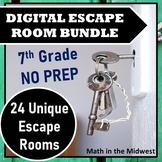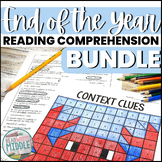134 results
7th grade Earth Day statistics laboratories
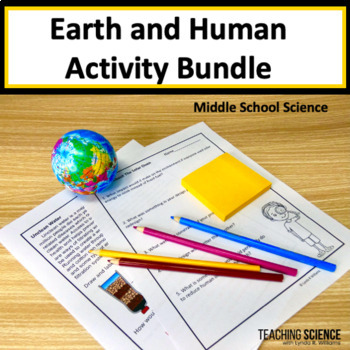
Natural Hazards & Human Impact on the Environment Science & Renewable Energy
This bundle is for the Earth and Human Activity Strand for Middle School Science. Students should understand the impacts of humans on natural resources, the impacts of natural hazards on humans, and the impacts of human activity on Earth processes. ✅ Save 20% by purchasing as a bundle! This bundle covers the standards in the Earth and Human Activity Strand as part of the Earth Science Middle School standards.☀️This Human Impact Bundle Includes:Distribution of Resources NGSS MS-ESS3-1.Natural H
Subjects:
Grades:
6th - 8th
Types:
NGSS:
MS-ESS3-2
, MS-ESS3-1
, MS-LS2-5
, MS-ESS3-5
, MS-ESS3-4
...

Global Warming Climate Change Unit Text Activity Quiz Test Lesson Plan Bundle
SAVE OVER 45%! This climate change unit is engaging, data-driven, and provides a large variety of activities and assessments. EVERYTHING YOU NEED TO TEACH A COMPREHENSIVE CLIMATE CHANGE UNIT IS INCLUDED. All of the work has been done for you - from start to finish! Reflect the rigor of NGSS with the included texts, engaging activities, and assessments. This unit has a little bit of everything, even a sub plan. The resources included provide numerous opportunities for data analysis and cri
Subjects:
Grades:
7th - 10th
Types:
NGSS:
MS-ESS3-5
, MS-ESS3-4
, HS-ESS3-5
, HS-ESS3-4
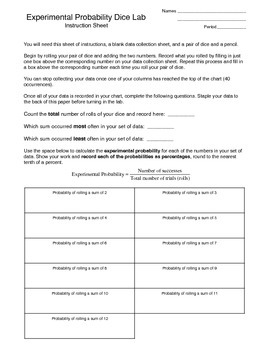
Experimental Probability Activity (dice lab)
In this activity students work with a partner to roll a pair of dice (many times) and record the sum of the dice in a data collection sheet. Once the data has been collected the students are walked through the process of calculating the experimental probability for each sum and then the theoretical probability for each sum and are asked questions about the differences they find between the values. Students also make a bar graph using the percentages for theoretical probability and can visually s
Subjects:
Grades:
7th - 11th
Types:
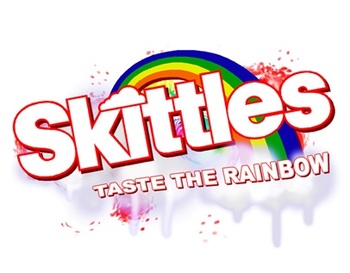
Candy Probability: Discovery of EXPERIMENTAL vs. THEORETICAL Probability
Middle Schoolers LOVE probability!
This is a GREAT lesson around Halloween when the kids are already hyped up on sugar and want to 'talk' to their classmates.
This activity allows the students to DISCOVER the differences between EXPERIMENTAL and THEORETICAL probability and connect it to everyday experiences. The probability lesson lends itself to fractions, decimals, percents, data collection, rational & irrational numbers, statistical graphs (box and whiskers, frequency tables...), measu
Subjects:
Grades:
5th - 9th
Types:
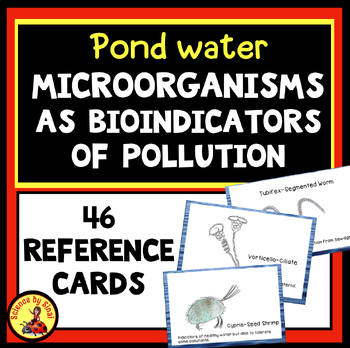
Pond Water MICROORGANISMS BIOINDICATORS of Water Pollution 46 Reference
Students observe and identify pond water microorganisms with microscopes to determine if it is polluted or not. Here are 46 reference cards of protists and invertebrates with pollutant tolerance levels indicated. Some common protists and pond organisms can be used as bioindicators. Are you studying MS-ESS3-3 or HS-ESS3-4 and discussing the impact that humans have on our waterways? For years I have taken my middle school classes to a nearby pond to collect organisms to look at under the microsc
Subjects:
Grades:
7th - 9th
Types:
NGSS:
MS-ESS3-3
, HS-ESS3-4
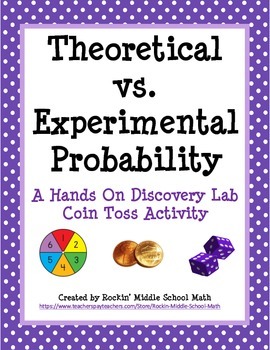
Theoretical vs Experimental Probability Lab (includes making predictions)
This is a fun, student-centered activity in which students working with a partner will conduct an experimental lab tossing 2 coins. After completing the lab, they will draw conclusions based upon the results of the activity concerning the difference between theoretical and experimental probability. Then they use experimental probability to make predictions. I have included the lab activity, a follow-up worksheet which can be used to engage student discussion after the lab, and a worksheet for
Subjects:
Grades:
6th - 9th
Types:
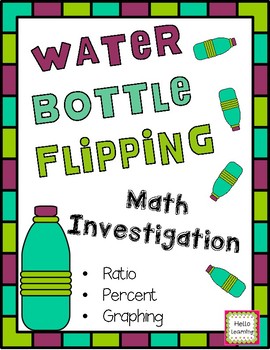
Water Bottle Flipping Investigation
Water bottle flipping- ratio, percent, measurement, data collection and graphing! The kids love bottle flipping and this product will let you bring bottle flipping into your classroom in an educational way!
Students will make predictions about the ideal water level in their water bottle that will result int he most successful flips. They will then record data about their bottle and conduct a variety of trials using different water levels to test their success with flipping their bottle at d
Subjects:
Grades:
5th - 7th
Types:
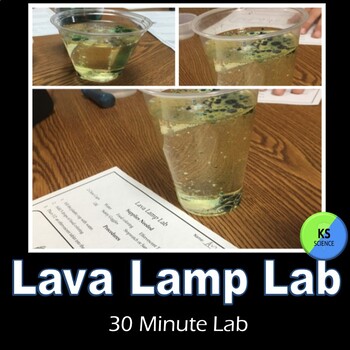
Lava Lamp | Oil And Water Science Experiment | Matter And Its Interactions
Use effervescent tablets to create lots of oohs and ahhs while discovering the properties of oil and water. This hands-on lab can be conducted in 30 minutes. It uses simple supplies and includes teacher background information, tips, science activity, and a reading passage. It makes an excellent introductory lesson about oil spills for environmental science and Earth Day.Included in the Hands-on ActivityBackground Information and Vocabulary on the Properties of Miscible and Immiscible Liquids.Han
Subjects:
Grades:
4th - 7th
Types:
NGSS:
5-PS1-3
, 5-PS1-4
, MS-PS1-2
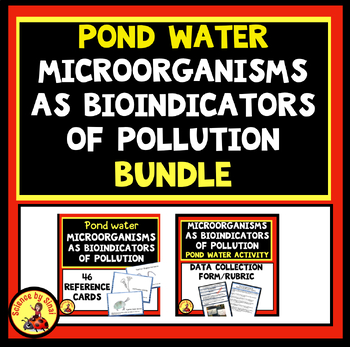
Microorganisms as BIOINDICATORS OF WATER POLLUTION In a Pond Activity BUNDLE
Here is a set of 46 bioindicator microorganism identification cards for students to use as they search for creatures using microscopes looking at pond water. Also included is a data collection form and a final project rubric. Please see the descriptions and previews of each of the two products.
Subjects:
Grades:
6th - 9th
Types:
NGSS:
MS-ESS3-3
, HS-ESS3-4
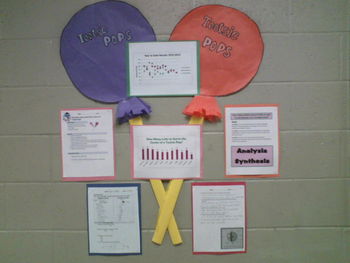
How Many Licks to the Center of a Tootsie Pop? Statistics!
Looking for novel way to get your middle school students excited about math and statistics?!
This file contains everything you need to conduct the experiment (except the Tootsie Pops!) that answers the age old question "How many licks does it take to get the center of a tootsie pop?" The lesson covers mean, median, mode, range, outliers, tables, graphs, box and whisker plots, data collection, pre and post discussion questions, experimental procedures, and student reflection. I also provided a s
Subjects:
Grades:
6th - 9th
Types:
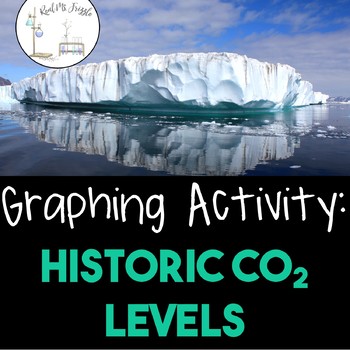
Graphing Activity: Historic CO2 Levels (Paleoclimate)
A great activity for Earth Day in the middle school, or for teaching climate change in an Earth Science class!----------------------------------------------------Middle school students often know that CO2 levels on earth are rising, and that there is a lot of concern about how the climate will change as a result of this increase.However, most students are not aware of the historic and cyclical changes of CO2 here on Earth that affect history climates, often referred to a Paleoclimate.-----------
Subjects:
Grades:
6th - 9th
Types:
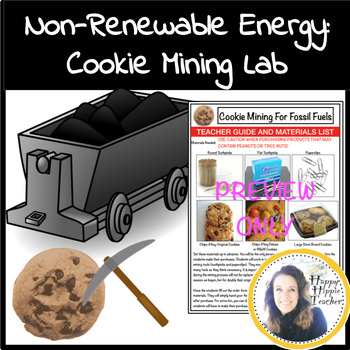
Nonrenewable Energy Resources - Cookie Mining Activity
THIS RESOURCE IS PART OF MY EARTH BUNDLE FOR A BIG DISCOUNT! Give your students a hands on and authentic learning experience as you study the processes behind obtaining fossil fuels. This cookie mining lab provokes students to strategize, work collaboratively, and gain understanding on the difficulties with mining nonrenewables for energy resources. ~~~~~~~~~~~~~~~~~~~~~~~~~~~~~~~~~~~~~~~~~~~~~~~~~~~~~~~~~~~~~~~~~~~~~~~~~~~~~~~~~~~~~~~~~~Students will have a change to analyze and interpret seve
Subjects:
Grades:
4th - 12th, Higher Education, Adult Education
Types:
Also included in: Environmental Science Bundle - Repurposing Project and Lab Activities
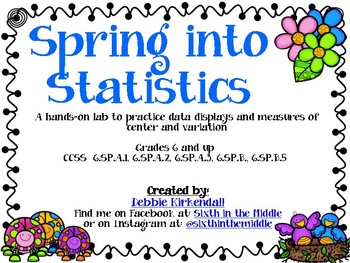
Spring into Statistics Data Displays and Measures of Center Lab
This is a hands-on lab that teaches about Statistical Questions, Data Displays (dot/line plot, histograms, box plots) and Measures of Center (mean, median, mode, and range). The lab includes notes pages, examples with answer keys, and a final project in which the student can survey classmates and create a "flower" by using their data to find mean, median, mode, range. They will also create a box plot, histogram and dot plot.

Water Conservation Lab: Design & Carry Out a Study - NGSS: Distance Learning
In this activity NGSS (Next Generation Science Standards) aligned activity, students (Part 1:) design and carry out a study to calculate how much water will be saved if they turn the water off while brushing their teeth, and (Part 2:) design and carry out a loner-term study at home to calculate how much water can be conserved. The lesson proceeds as follows: 1. First, students watch a short video on water conservation, and the growing water shortage crisis worldwide. They answer a few questio
Subjects:
Grades:
5th - 12th
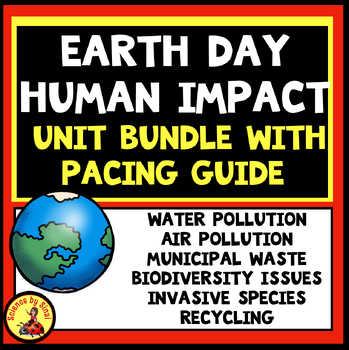
HUMAN IMPACT AND EARTH DAY UNIT BUNDLE With Pacing Guide MS-ESS3-3, MS-LS2
Here is my 2-3 week unit bundle for teaching Human Impact and Earth Day as part of MS-ESS3-3, MS-LS2-3 and MS-LS2-4. Easy prep activities. There is a detailed pacing guide that also includes links to my blog posts that helps you build out each activity. Please see the detailed preview.Topics Include:Interconnected Food WebsAbiotic and Biotic Components Manmade or Natural Events Affect Food WebsDesign a Water FilterUse Pond Water Microorganisms as Bioindicators of Water PollutionDetermine the Rat
Subjects:
Grades:
5th - 8th
Types:
NGSS:
MS-LS2-3
, 5-LS2-1
, 5-ESS3-1
, MS-LS2-4
, MS-ESS3-3
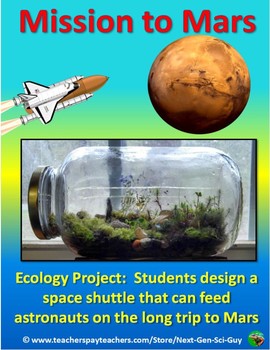
Mission to Mars Lab: Design a Ship to Feed Astronauts |NGSS| Distance Learning
This ecology project is packed full of NGSS standards, and engages students in STEM activities. It proceeds as follows:1. First, students consider the hurdles involved in a manned-trip to Mars2. Then, students use concepts in ecology to design and create a self-sustaining food room for astronauts3. Finally, students evaluate the strengths and weaknesses of their mini-ecosystem Time Frame: The initial set up of the project requires one or two classes. Students can then make observations for a f
Subjects:
Grades:
6th - 12th
Types:
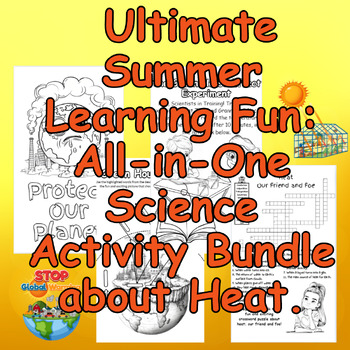
Ultimate Summer Learning Fun: All-in-One Science Activity Bundle about Heat.
Ultimate Summer Learning Fun: All-in-One Science Activity Bundle! Are you ready for an exciting summer filled with fun and learning? Our Ultimate Summer Learning Fun Bundle is the perfect way for kids aged 6-14 to explore the wonders of heat, all while having a blast!What's Inside:1. Discovering Heat: Concept - Measuring HeatUnderstand the basics of heat and how to measure itFun worksheets and activities2. Heat Transfer: Conduction, Convection, and RadiationComprehensive notes and hands-on expe
Subjects:
Grades:
1st - 10th
Types:
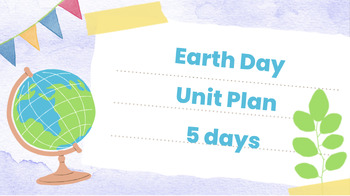
Earth Day Unit Plan 5 days
I have created a 5 day unit lesson plan as Google Slides, related to Earth Day! Each day has the objectives, assessment and key points. NGSS standards are included (in the notes section of slides). Each day has an extra class/group activity as well, related to that day. Happy Earth Day!
Subjects:
Grades:
3rd - 7th
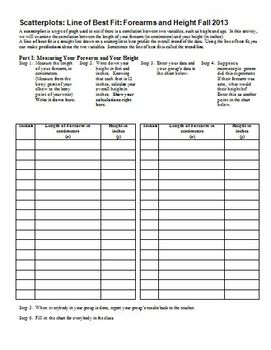
Scatterplots Linear Regression Line of Best Fit Forearms & Height (Editable)
After teaching my students about scatterplots, correlation, and the line of best fit, I take a day for them to do a hands-on lab, in which they measure their height (in inches) and their forearm length (from the tip of their elbow, to the bony point on their wrist), and we plot the class data, write the equation of the line of best fit, and then use the equation generated both forwards and backwards. They will need 45 minutes to an hour to do this in class.
I have found that if the students br
Subjects:
Grades:
7th - 12th
Types:
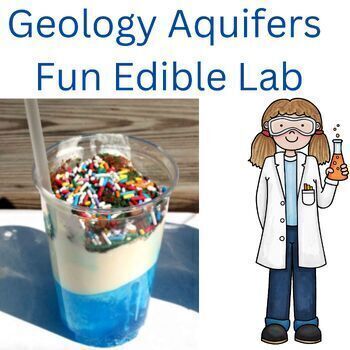
Geology Aquifers fun edible lab Middle School Science and Homeschool
Do your middle school science students love to eat candy in school? Do not fight it but embrace it by having them build an edible aquiferThis lesson is terrific both for the classroom teacher and homeschoolMake science FUN Included in this lesson is1. Prelab with questions2. Detailed instructions on the materials and procedure3. Extension if you would like to have your students go further into the subject Materials Clear plastic cupsIce cream scoopSpoonsDrinking straws Blue/red food coloringV
Subjects:
Grades:
6th - 9th
Types:
NGSS:
MS-ESS3-1
Also included in: Earth Science Geology Bundle for Middle School Science & Home School
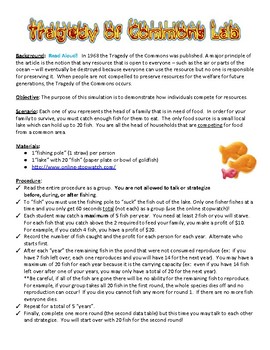
Tragedy of the Commons Lab - Human Impact on the Environment
In 1968 the Tragedy of the Commons was published. A major principle of the article is the notion that any resource that is open to everyone – such as the air or parts of the ocean – will eventually be destroyed because everyone can use the resource but no one is responsible for preserving it. When people are not compelled to preserve resources for the welfare for future generations, the Tragedy of the Commons occurs. Objective: The purpose of this simulation is to demonstrate how individuals co
Subjects:
Grades:
4th - 10th
Types:
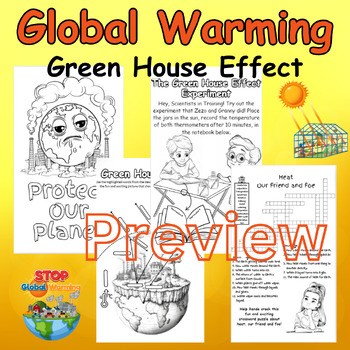
Understanding Global Warming and the Greenhouse Effect: Coloring, Activities
Worksheet Title: Understanding Global Warming and the Greenhouse EffectTarget Audience: Kids aged 6-14Contents:Informative notes explaining global warming and the greenhouse effectFun coloring pages to visualize the conceptsEngaging activities to deepen understandingHands-on experiment to demonstrate the greenhouse effect and global warmingPost-assessment to review learning outcomesChallenging puzzles to reinforce key conceptsPurpose: Teach kids about the importance of the greenhouse effect and
Subjects:
Grades:
1st - 10th
Types:
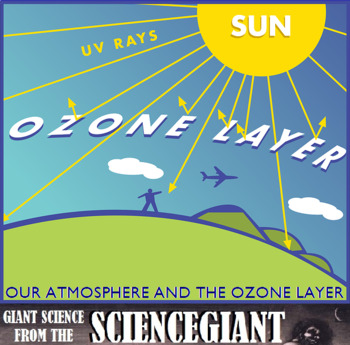
Question Exploration: Our Atmosphere and the Ozone Layer
Is the Earth's ozone layer in danger? This Question Exploration provides basic background information to answer questions on ozone-related issues in atmospheric science. Often students confuse ozone depletion with global warming or the Earth’s protective upper ozone layer with ozone and smog at the ground level. This lesson focuses on the structure of the ozone layer and how we have learned to protect it. Training Materials Instruction Guide: Our Atmosphere and the Ozone LayerOzone Q&A for I
Subjects:
Grades:
6th - 12th
Types:
Also included in: StayGiant Earth Science Bundle: The Atmosphere (air)

Create your own Water Filter PBL
Design and build a device that can clean a dirty water sample using materials around your home. This is a 5 part project that includes researching, designing, building, and reviewing. Part 1: ResearchPart 2: DesignPart 3: ConstructPart 4: Test & ReviewPart 5:Survey
Subjects:
Grades:
6th - 9th
Types:
Showing 1-24 of 134 results






